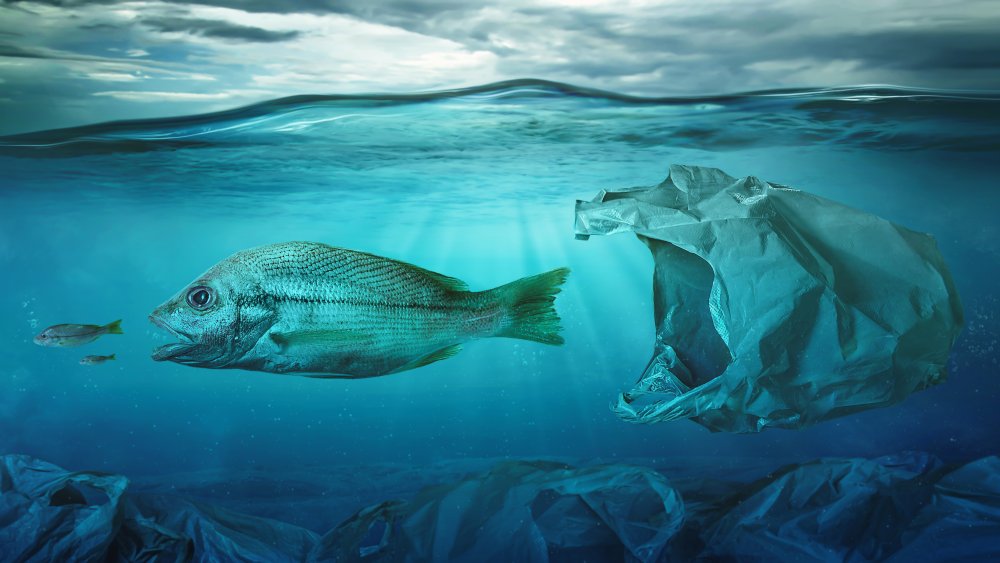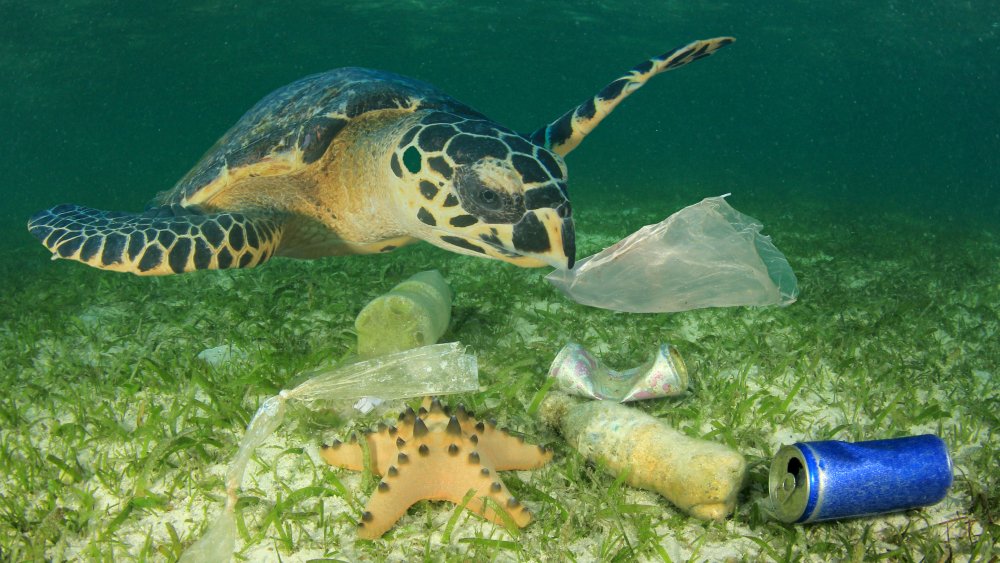How Dirty The Ocean Really Is
In 2019, the sea received a filthy bill of health along the Scottish coast. As CBS details, a researchers made a nightmarish discovery after a sperm whale beached itself on a northern island and died. A necropsy was performed by the Scottish Marine Animal Stranding Scheme (SMASS), which sounds like an ambitiously sinister plot to maroon marine animals but is actually an agency that gathers data about them. SMASS found a mass of garbage lodged inside the animal. The whale had swallowed 220 pounds of nets, rope, cups, packing straps, tubing, bags, and debris that formed a bulging ball in its belly.
Sadly, this whale wasn't an anomaly. In March 2019, the stomach of a deceased whale in the Philippines contained 88 pounds of plastic. Another discovered on the Italian coast in April had eaten roughly 50 pounds of plastic. These jarring garbage discoveries are just the tip of the ick-berg. As SMASS remarked, "Debris in our oceans is everyone's problem – the fishing industry [needs] to do better, but equally, we all need to do more." Just how much damage has humanity done?
The ocean is becoming a watery mass grave
The National Oceanic and Atmospheric Administration reports that an estimated eight million metric tons of plastic enter the world's oceans annually. That's tantamount to the weight of about 90 aircraft carriers. Pew places the figure even higher, estimating that up to 13 million metric tons of plastic inhabit the ocean. And it really gets around. The BBC writes that the deepest sub dive in history uncovered garbage at the bottom of the Mariana Trench. Plastic bags and wrappers had invaded the underwater abode of four previously undiscovered crustaceans and who knows how many other unseen species?
Per Pew, plastic kills up to a million seabirds every year and impacts an estimated 800 species across the globe. Animals get trapped in trash or choke to death ingesting it. Since plastic doesn't biodegrade, it eventually breaks down into microplastics that similarly litter the innards of unlucky sea creatures that eat it. According to the Florida Museum, these animals may be malnourished. They pass on their poor diet as the plastic trash inside them travels up the food chain and ends up in human bellies. You don't even need to eat an animal – The Conversation observes that a kilogram of sea salt can contain more than 600 microplastics.
Plastic is just one facet of the problem. Motor vehicles leak oil that eventually ends up in oceans. Agricultural runoff runs right off the land and into the sea. Even the air pollutes the ocean. For instance, excess carbon dioxide from the burning of fossil fuels acidifies seawater, making it increasingly inhospitable for the sea creatures that live there.

